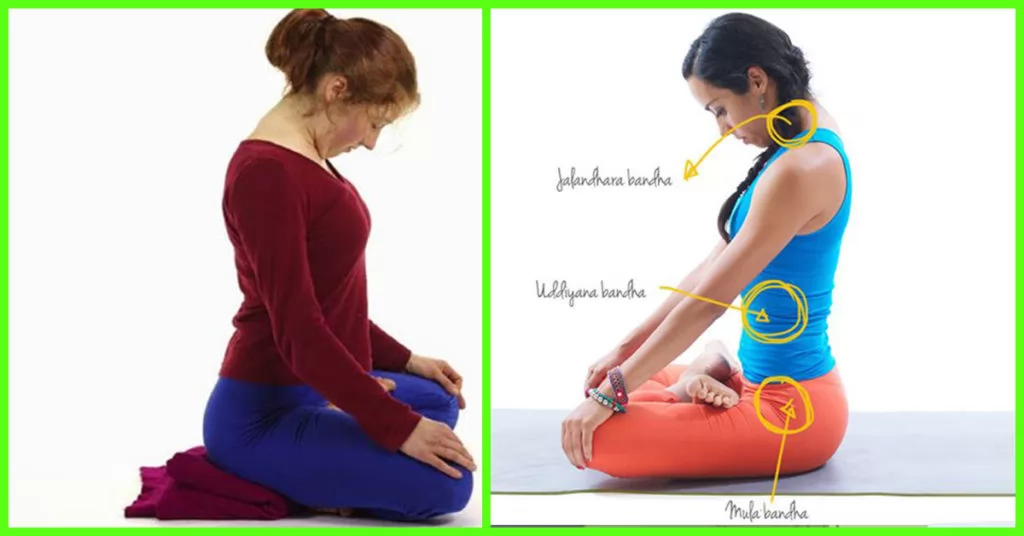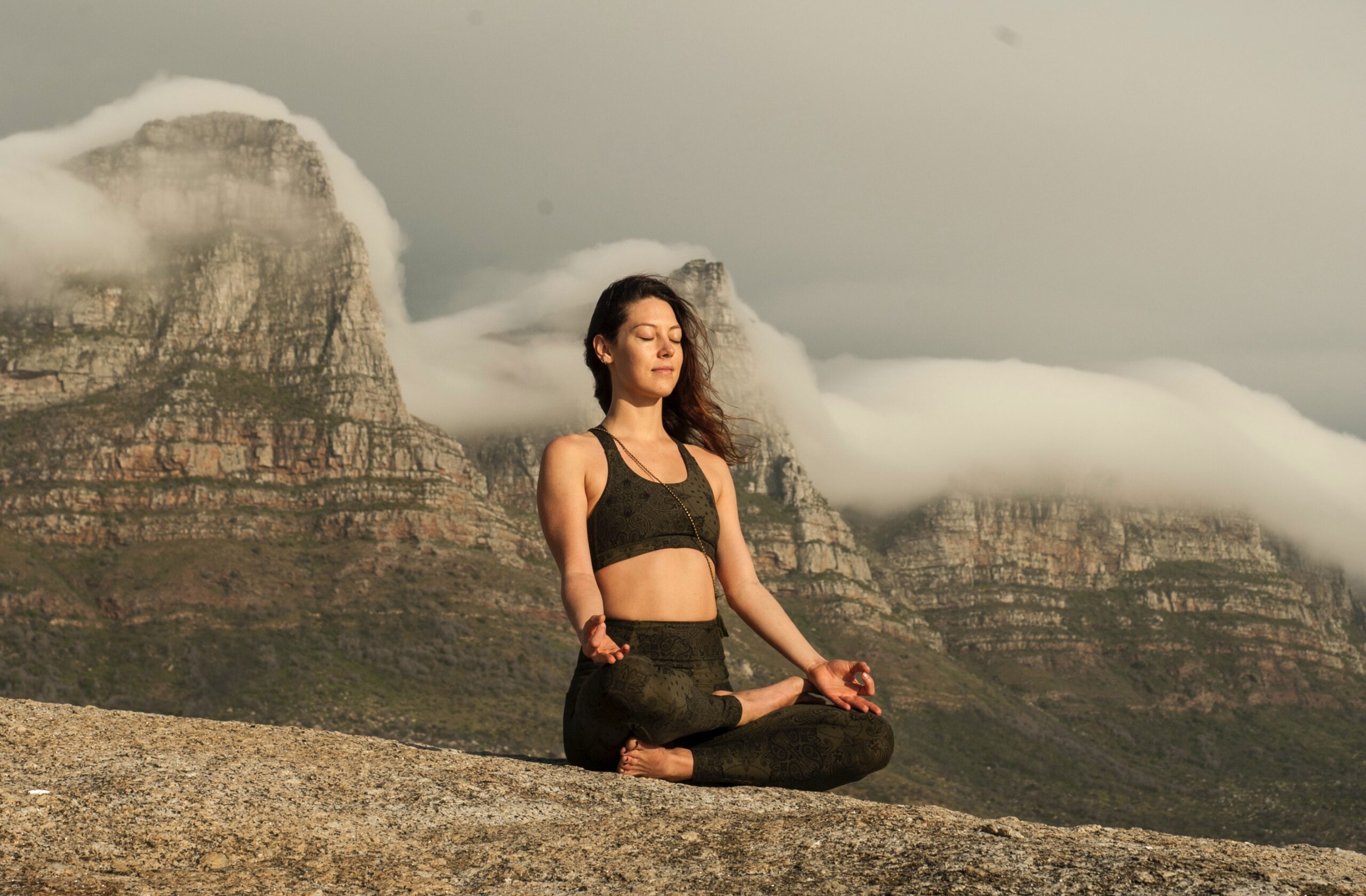Moorchha pranayama is also called as swooning or fainting breath pranayama. It helps in emptying the mind and creating a sense of void. This pranayama strongly influences the pranic body.
Learn the correct way to perform this pranayama below.
Mention In Scriptures
The following passage is from Hatha Pradipika, in which Swatmarama mentions about moorchha pranayama.

Translation: “Closing the passages with Jâlandhar Bandha firmly at the end of Pûraka, and expelling the air slowly, is called mûrchhâ, from its causing the mind to swoon and giving comfort” [1].
Moorchha Pranayama Procedure

- Sit in a comfortable meditation posture. Your head and spine should be straight. Your hands should be placed on your knees either in chin or jnana mudra.
- Now, close your eyes and make your body comfortable and relaxed.
- After a minute or so of relaxing, perform khechari mudra.
- After this proceed to slowly inhale from both your nostrils like in ujjayi pranayama. At the same time, gently bend your head back just a little.
- Then perform shambhavi mudra.
- All the while keep your arms straight by locking your elbows and pressing your knees with both the hands.
- Retain the breath inside as you maintain shambhavi and khechari mudra.
- Then while retaining the breath bring your head forward and perform Jalandhar bandha by bringing your chin against the chest.
- Retain the breath as long as you feel comfortable. Do not push yourself. Then finally, exhale and relax your arms.
- Close your eyes and softly bring your head back to upright position.
- Relax your whole body and keep your eyes closed. You will feel relaxed, calm, tranquil and the mind will be empty of thoughts.
- This completes one round.
Duration
Practice this pranayama until you start feeling a fainting sensation. It is very important that in the beginning this pranayama is performed under an expert’s guidance. Hold your breath in as long as you feel comfortable.
This pranayama is best practiced after asanas and before meditation.
Awareness
Physical – On your breath, head movement and eyebrow center.
Spiritual – On the void formed behind your eyebrow center.
Moorchha Pranayama Precautions
- This pranayama induces a feeling of light headedness or swooning. Therefore, it should only be practiced under an expert’s guidance.
- People suffering from the following disease or health conditions should avoid this practice:
- Heart Disease
- Glaucoma
- High Blood Pressure
- Low Blood Pressure
- Epilepsy
- Brain Disorders like aneurysm
- Atherosclerosis of the carotid or basilar arteries
- This pranayama should be practiced on an empty or very light stomach.
- People suffering from serious psychiatric conditions should avoid this pranayama.
Warning
As soon as a state of fainting is felt, stop the practice. The goal is to just induce a state of semi and not complete unconsciousness.
Breath retention or Kumbhaka for long duration is developed very slowly and under an expert’s guidance. Kumbhaka also requires a strict diet. Without proper preparation and training, a prolonged khumbhaka can prove to be dangerous.
Moorchha Pranayama Benefits
- This pranayama helps in calming and tranquilizing the mind.
- It increases mental energy.
- It helps in improving focus.
- It helps in soothing negative emotions and mental agitation.
- It helps in calming anxiety.
- It energizes the ida and pingala nadi and helps in increasing pranic energy in the body.
- It helps in clearing the sushumna nadi.
- It helps in increasing the feeling of joyfulness.
- It helps in reducing blood pressure as Jalandhar Bandha exerts pressure on carotid sinus.
- It helps in curing headache.
- It is a powerful practice performed before meditation, as it produces a feeling of light-headedness or swooning.
References
- (All the verse translations in the article are by Pancham Sinh) Book: Hatha Yoga Pradipika Translated by Pancham Sinh.
- Book: Asana Pranayama Mudra Bandha by Swami Satyananda Saraswati
- Book: The science Of Pranayama by Sri Sivananda.
- Book: Light on Pranayama by B.K.S Iyengar.
